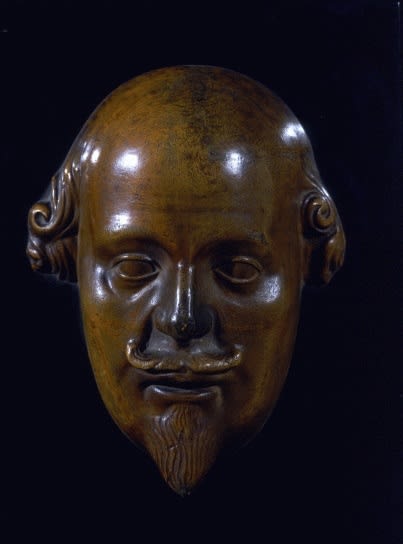
Nineteenth Century English School, after Gerard Johnson
To view all current artworks for sale visit philipmould.com
The face of Shakespeare preserved in this plaster cast is taken from the tomb effigy in Holy Trinity Church, Stratford upon Avon, commissioned from Gerard Johnson the Younger by the poet's wife Anne Hathaway and completed in 1623.
The tomb sculpture set into the north wall of the chancel shows Shakespeare at half-length within a classical aedicule, with a commemorative inscription. The sculpture was originally polychromed, which permitted a greater degree of likeness than casts such as this, and the present appearance of the statue which has been covered by successive layers of whitewash and later colour, would suggest. The likeness nonetheless conforms to the face shown in the first folio frontispiece engraving by Martin Droeshout and to the Chandos portrait in the collection of the National Portrait Gallery (NPG 1).
Although the date at which this cast was taken is not known, George Vertue records that casts were being taken as early as 1737 when he ordered ''a Cast from the Bust of Shakespears head on his Mont.'' (Notebooks VI p.83) The demand for such images increased through the eighteenth century, and was well-established in the nineteenth. The National Portrait Gallery owns a full cast of the tomb effigy (NPG 1735) and a cast similar to the present example of the effigy's face (NPG 185A).
Be the first to hear about our available artworks
* denotes required fields
We will process the personal data you have supplied in accordance with our privacy policy (available on request). You can unsubscribe or change your preferences at any time by clicking the link in our emails.